
The floor of the nave of St. John co-cathedral.
Unfortunately, one is not free to wander over the whole floor; tourists can circulate freely only in the chapels, and even there most of the floor is covered for protection. The nave is roped off during weekdays, which means one can see the whole floor, but cannot look at the tombs one by one. On week-ends chairs are placed in the nave for the faithful.
The excellent guide to the church written by Dominic Cutajar (available in various languages at the bookshop) contains a numbered floor plan of the church and an alphabetical list of all the knights interred, which helped me make identifications when I could not read the epitaph. The author states that no study of the marble inlays has yet been done. He guesses that the inlay was done by local artists on the basis of designs produced by Italian artists. Clearly, as can be seen from the floor of other Maltese churches (particularly the cathedral at Mdina) the tradition continued into the 19th c., long after the knights had left.

The floor of the nave of St. John co-cathedral.
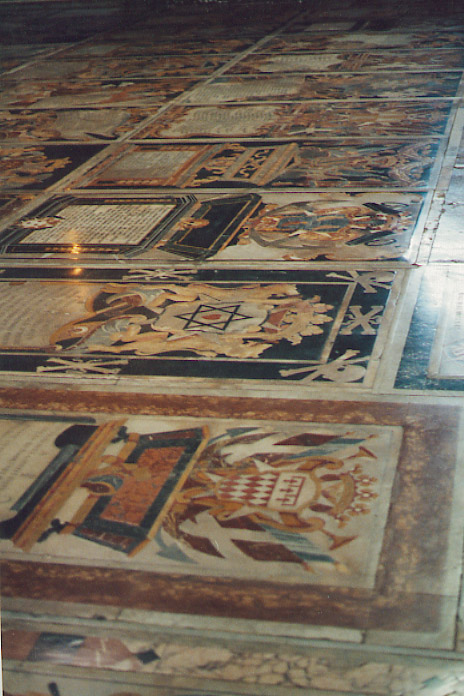
The floor of the nave. From bottom, the three closest tombstones
are those of Fra Giovanni Francesco Canucci (lozengy gules and argent,
on a chief of the second a label with three fleurs-de-lys between four
pendents of the first), Fra Thomas de Villages (Argent a heart gules
between two triangles voided sable, interlocked to form a mullet; d'argent
à deux triangles vidés de sable entrelaçés
en forme d'étoile enfermant un coeur de gueules), Jean François
de Chevestre de Cintray (azure three owls or; d'azur à trois
hiboux d'or).
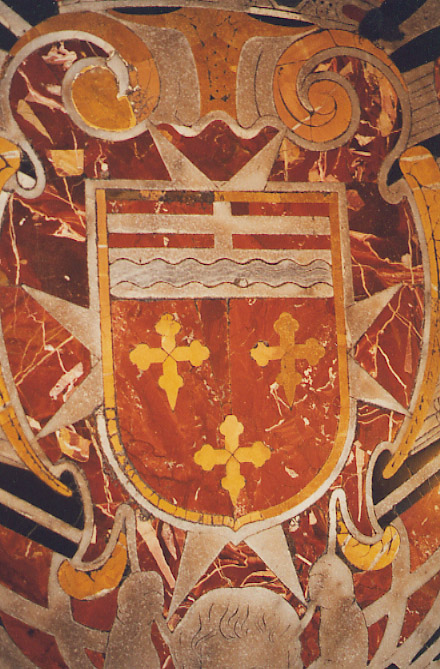
Fr. Alexandre de Loubert de Martainville (d. 1749 age 65), in the Oratory.

Fr. Horace de Blacas d'Aulps (d. 9 sept. 1666), in the chapel of Provence. (d'argent à une étoile à seize rayons de gueules.)
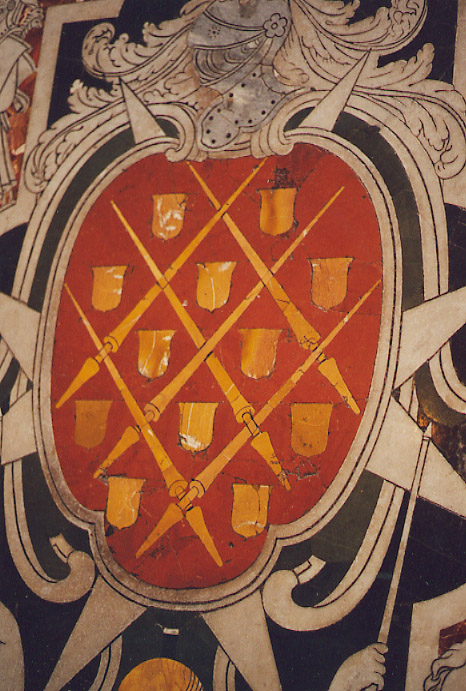
Fr. Honoré de Villeneuve de Villevieille, in the chapel of Provence.(De
gueules, fretté de six lances de tournois d'or, semé dans
les claire-voies d'écusson du même).
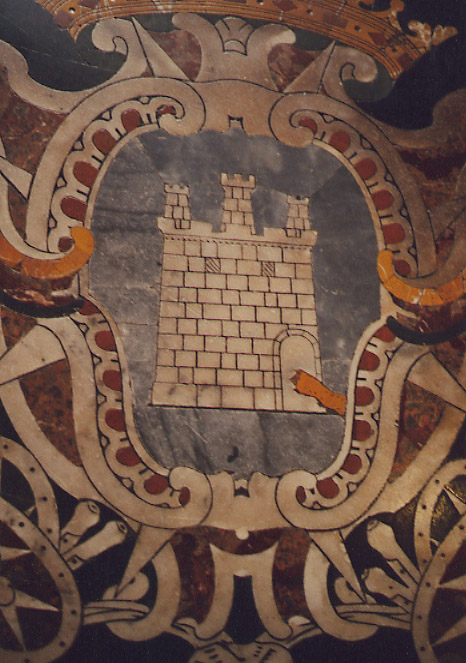
Fra Bretrand de Moreton de Chabrillant, in the chapel of Provence.
(Azure a tower with five merlons, topped by three turrets with three
merlons each, all argent masoned sable, with a bear's paw or issuing from
dexter base touching the door; d'azur à une tour crénelée
de cinq pièces. sommée de trois donjons chacun crénelé
de trois pièces, le tout d'argent maçonnée de sable,
à la patte d'ours mouvant du quartier senestre de la pointe, et
touchante à la porte de la tour.)

Fr. Raimondo Albino Menville, chancelor (d. 1801). Note the chief
bearing the arms of Grand Master Emmanuel de Rohan.
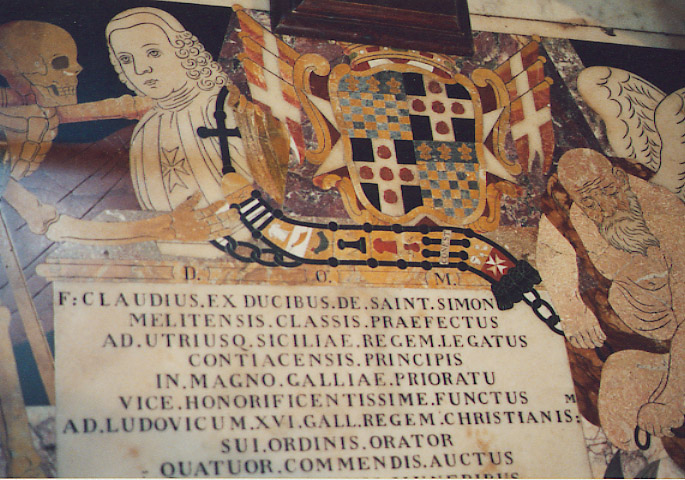
Claude de Rouvroy de Saint-Simon (of the dukes of Saint-Simon, as the Latin epitaph states in Italian style; he was the chief of name and arms, the ducal branch being in fact the youngest), born 1694, became a professed knight in 1727, galley captain in 1733, bailiff grand-cross in 1734, general of the galleys in 1735; he held four commanderies in France and was deputy of the grand prior of France Louis-François de Bourbon, prince de Conti.
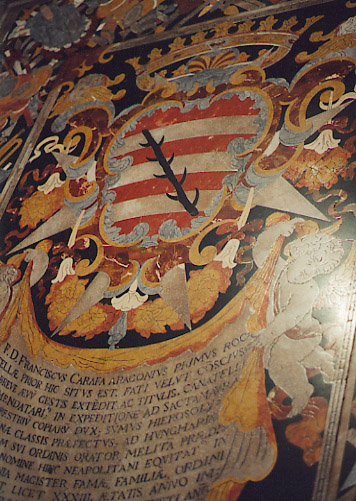
Fra Francesco Caraffa d'Aragona (d. 19 Sept. 1679), in front of the
main altar.
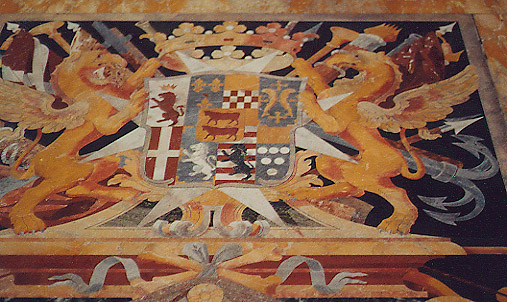
Fra Henri-Auguste de Béon de Luxembourg (d. 15 Jan 1699). Note the crossed bones beneath the shield, neatly tied together with a ribbon.
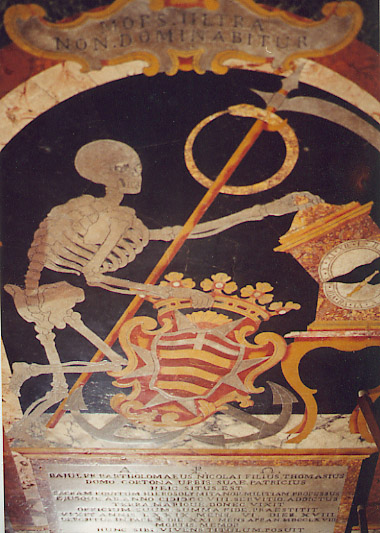
Bali Bartolomeo Nicolai, son of Tommaso Nicolai, patrician of Cortona
(d. 1768).
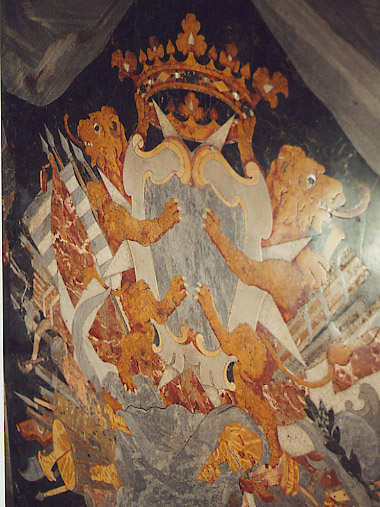
Fra Giovanni Battista Brancaccio (d. 3 July 1687). The arms are Azure
four lions' paws or fessways, two issuing from each flank (d'azzurro
a quattro branche di leone d'oro, poste in fascie, moventi dai fianchi
dello scudo, due a destra, e due a sinistra). Notice how the
paws of the supporting lions have been turned into the charges of the shield
itself.

Monument of the vicomte de Beaujolais, younger brother of the future Louis-Philippe I, king of the French. The vicomte died on 29 May 1809 and was buried in the co-cathedral. The monument was commissioned by Louis-Philippe in 1843 from the sculptor Jacques Pradier. His arms are shown as the Orléans family arms with no discernable mark of cadency, surmounted by the coronet of a prince of the blood. There is no indication of his membership in the Order.
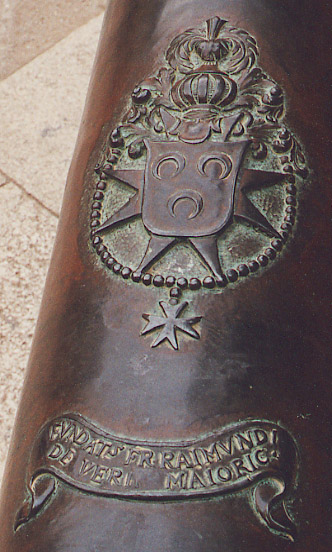
Arms of Fr. Raimundo de Veri, of Majorca, on a cannon of 1600 guarding
the co-cathedral of St. John, Valletta (Azure three crescents pendent
or).
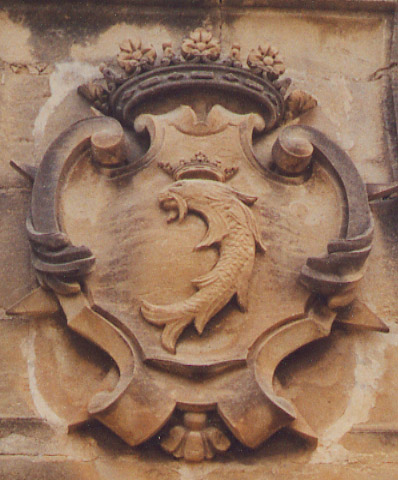
Arms of Flaminio Balbiano, Grand Prior of Messina and admiral of the
Order, on the arcades of the Upper Barracca Gardens which he erected (1661).
Gules a barbel (It. barbio, Fr. bar) crowned or.